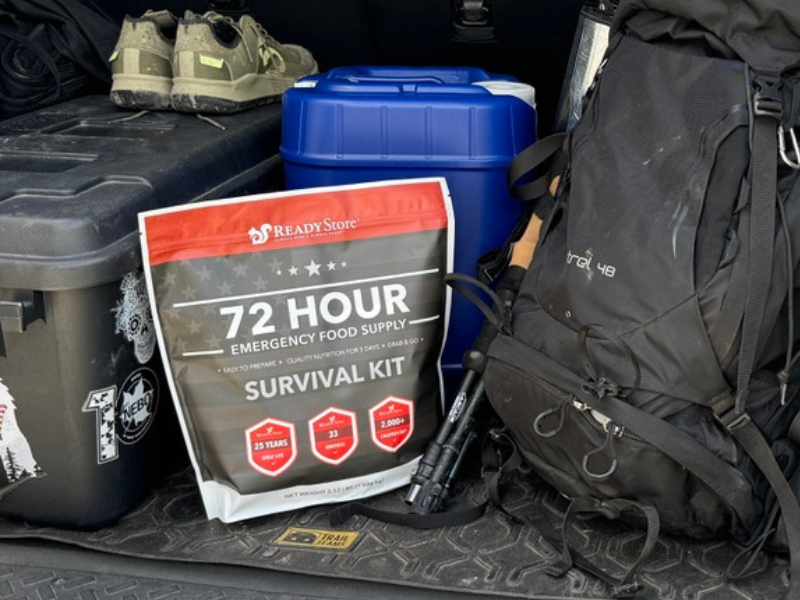Explore the surprising research on human behavior in times of disaster. From panic myths to social solidarity, discover the truth behind common beliefs.
The Myth of Panic in Disasters
A lot of research has been done on human behavior during and after a disaster, and the findings might surprise you. One of the biggest myths is that disasters lead to mass panic.
In movies and TV shows, we often see individuals forgetting the needs of others and adopting an "every man for himself" mentality. This self-interested survival behavior is typically referred to as panic. However, historical research consistently shows that panic is not as common as we might expect.
In fact, research indicates that panic usually occurs under specific circumstances, such as when a person perceives an immediate threat, believes escape is possible but closing rapidly, or feels helpless when others cannot assist. Notably, if individuals believe escape is hopeless, as in the case of a mine collapse, panic rarely occurs.
Consider the famous example of the RMS Titanic sinking in 1912. When the Titanic collided with an iceberg and sank over the course of 2 hours and 40 minutes, 75% of women and children survived. This was due to social expectations and the time available to act heroically. In contrast, the RMS Lusitania sank much more quickly in 1915 after being hit by a torpedo, leaving passengers with little time to act. The survival rate, however, was similar (31.3% vs 38.5%) with younger and healthier passengers having higher survival rates.
| Statistic | RMS Titanic | RMS Lusitania |
|---|---|---|
| Passengers & Crew | 2,207 | 1,949 |
| Time to Sink | 2 hrs 40 min | 18 min |
| Deaths | 1,517 | 1,198 |
| Female Survival Rate | 75% | 37.1% |
| Male Survival Rate | 21% | 40% |
| Child Survival Rate | 50% | 25% |
| Overall Survival Rate | 31.3% | 38.5% |
The sinking of the Titanic and Lusitania provides insight into human behavior during disasters. So, why do we believe panic is so common? The media has played a significant role in perpetuating this myth.
The Beverly Hills Supper Club Fire: A Case Study in Panic
In 1977, a fire at the Beverly Hills Supper Club in Southgate, Kentucky, led to 164 deaths. Headlines reported that "Panic Kills 300," but further investigation revealed that most deaths were due to a lack of urgency in responding to the fire, rather than panic. People often hesitate to act when faced with unclear danger, such as during a fire alarm, instead of evacuating immediately.
The Power of Social Bonds During Disasters
Contrary to the myth of "selfishness," research shows that social bonds are strengthened, not broken, during disasters. Family members, in particular, will delay evacuation until everyone is safe. Social support increases as communities come together to help each other.
Reports of selfless acts often increase during disasters. For example, during the 1979 Wichita, Texas tornado, only 13% of victims were rescued by emergency responders, while the majority were rescued by neighbors and community members.
The Looting Myth
Another widespread myth is that looting becomes rampant during a disaster. However, research has shown that looting is more common in times of social unrest, such as riots, rather than after natural disasters. Communities experiencing economic hardship or social injustice may turn to looting as a form of protest against perceived inequality.
In fact, most people are inclined to share their resources in the aftermath of a disaster. According to a 2012 survey, 76% of Americans would be willing to share supplies with immediate family members, while 42% would share with close neighbors.
| Person/Group | Percentage Willing to Share |
|---|---|
| Immediate Family (Parents, Siblings) | 76% |
| Significant Others | 64% |
| Close Friends | 55% |
| Extended Family (Aunts, Uncles) | 49% |
| Neighbors (Well-Known) | 42% |
| Acquaintances | 29% |
| My Children (Asked Among Parents) | 28% |
| Neighbors (Not Well-Known) | 24% |
| Colleagues | 21% |
| Other | 6% |
| No One | 3% |
Stress, Grief, and Resilience
Most people think of grief as a process involving distinct stages, but recent psychological research shows that grief can be more fluid. Studies on survivors of events like the September 11 attacks show that many people bounce in and out of grief, overcoming emotional distress relatively quickly. In fact, resilience is more common than we realize, as many people naturally recover from trauma in a matter of weeks.
For instance, research on Israeli citizens exposed to rocket attacks shows that PTSD symptoms decreased significantly within two months, from 20% to just 3% of the population.
Conclusion: The Importance of Community Support
Research into human psychology during and after disasters reveals that, above all, we need each other. Humans are inherently social creatures who rely on one another for support, comfort, and survival. The myths of panic and lawlessness often obscure the real behaviors that help us endure.
What are your thoughts on human behavior during a disaster? Have you ever experienced an emergency situation where you witnessed these dynamics firsthand? Share your thoughts below!













